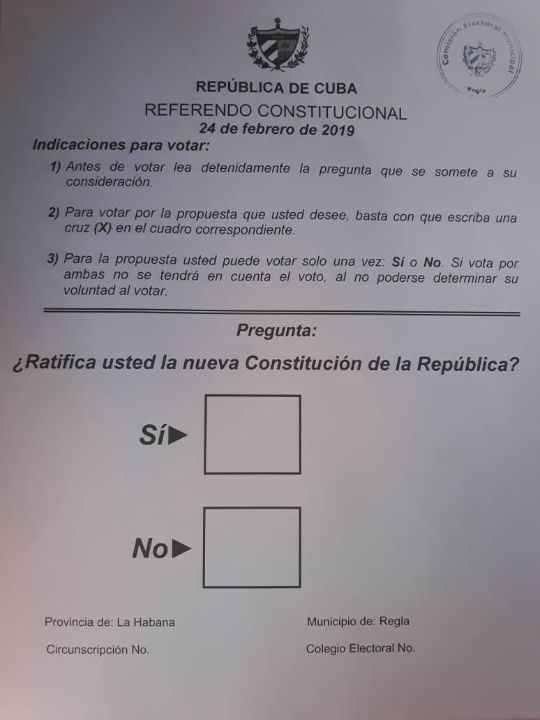6 Things to Know About Electoral Process of Cuban Referendum
especiales

More than 8 million voters will decide on the new Cuban Magna Carta, which the Parliament presented to the Nation on Dec. 22, 2018.
This Sunday, Feb. 24, the Cuban people will vote in a referendum to on the country's new draft Constitution. Almost 9 million people contributed to the making of the new text through a participatory process in which some 780,000 suggestions and 9,600 proposals were analyzed through 133,000 citizen meetings held between Aug. 13 and Nov. 15, 2018.
RELATED:
Cuban Cultural Expert: No One Should Vote 'No' On Constitution
How was the new constitutional text developed?
Almost 9 million people built the new text through a participatory process in which some 780,000 suggestions and 9,600 proposals were analyzed through 133,000 citizen meetings held between Aug. 13 and Nov. 15, 2018.
What's new in the new Cuban Constitution?
With respect to the current Magna Carta, the new Constitution modifies 113 articles, adds 87 articles and eliminates 11 articles. The new text made 760 modifications, which range from the addition of new laws to the elimination of phrases and words.
Who votes?
In Cuba, all citizens over the age of 16 who are registered in the Electoral Register of their Municipality and who have resided permanently in the country for a period of not less than two years before the electoral process can vote.
To exercise the vote, the citizen can not be legally declared as mentally incapacitated, must not be deprived of freedom or on parole and can not have limited political rights.
The vote will be exercised in 25,348 polling stations and in 195 special stations, which are located in places of high concentration of people such as inter-provincial bus terminals, hospitals and airports.
La dirección nacional de Joven Club se convierte en el colegio electoral No. 3 de la Circunscripción 84 en Plaza de la Revolución. Preparando todo para el Referéndum Popular. #YoVotoSí pic.twitter.com/l2SvlpZoy9
— Joven Club (@JovenClubCuba) February 23, 2019
"The Youth Club's national headquarters becomes the 84th Third Electoral College at The Revolution Square. Preparing everything for the Popular Referendum. I Vote Yes."
How do you vote?
Cuban citizens are expected to check which one is their electoral precinct in advance so as to verify any possible error in their personal data or address.
To corroborate their information publicly released previously, voters can request assistance in 189 'processing offices, which are distributed throughout the country and are aimed at helping the citizens. Personal information can also be requested by calling 18808 or sending a mail to registroelectoralcuba@rem.cu.
The current electoral ballots have a new format, which has 35 lines per page, informs about the number of voters, and includes voter's data such as name and surname, province, district and area of the Revolution Defense Committee.
What is the electoral ballot?
The ballot format was publicly shared so that the Cuban people become familiar with its content. In it, the voter is asked the following question: Do you ratify the new Constitution of the Republic? There are two answer options: Yes or No. In case the voter marks both choices, the vote will be considered null.

What will happen after the referendum?
If the Cuban people approve the new Magna Carta, the President of the Republic will replace the current figure of 'President of the Council of State and Ministers'. The position of Vice-president will be created and the position of Prime Minister will be reinstated.
Unlike the current Constitution, which was last rewritten in 1976, the new Cuban Constitution defines marriage as the union between two persons without specifying their sex. This paves the way for non-heterosexual marriage, which is an important demand of the Cuban community of lesbians, gays, transsexuals, bisexuals, and intersexes.













Add new comment